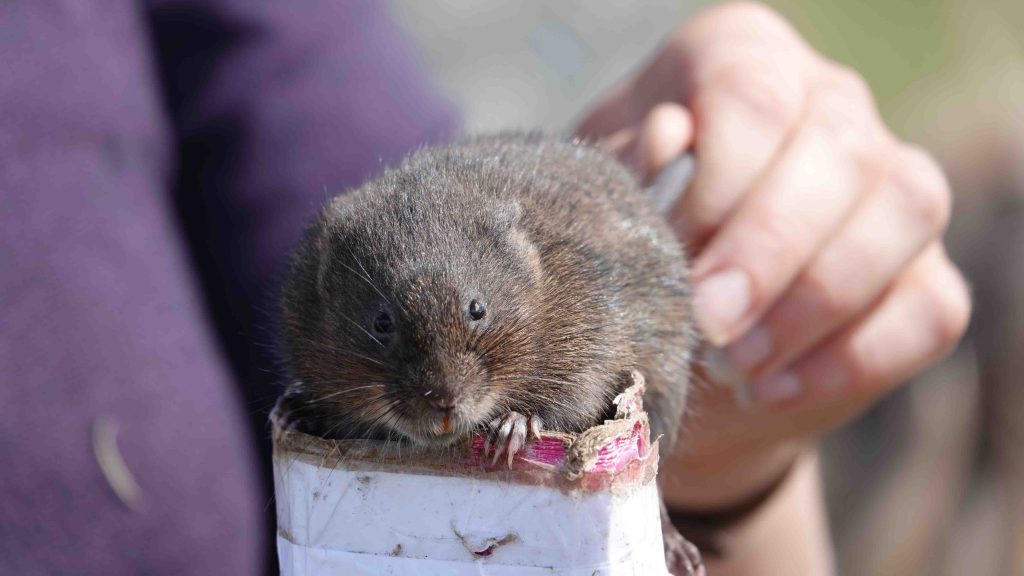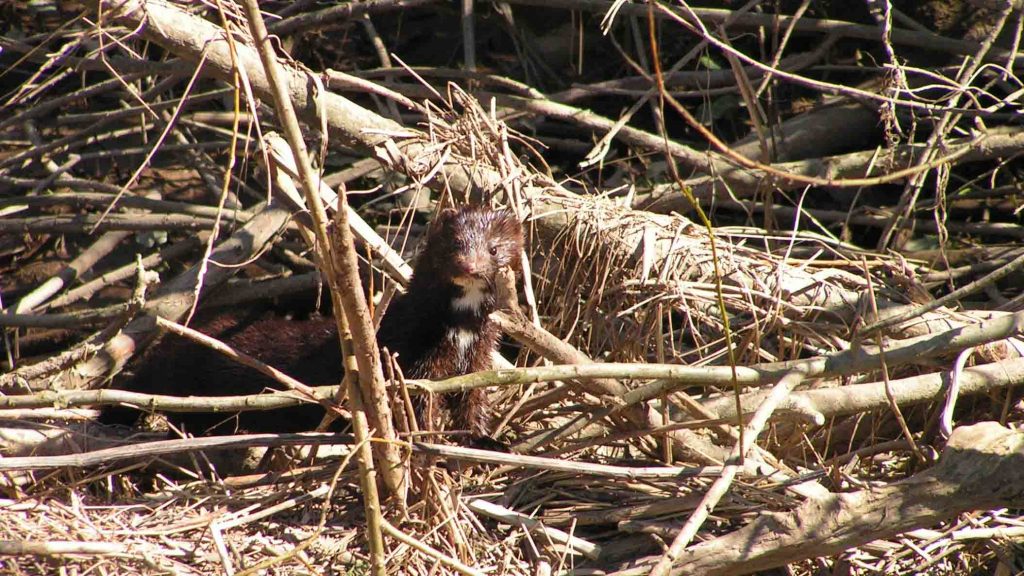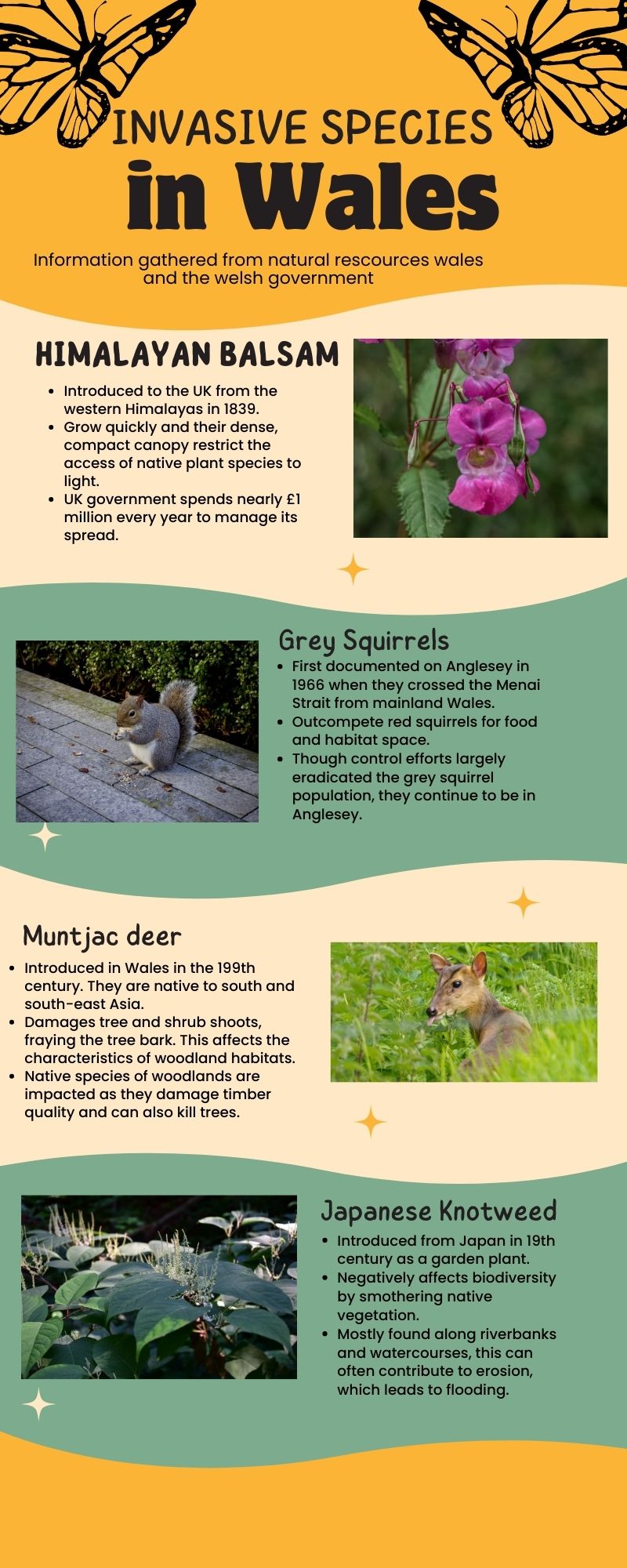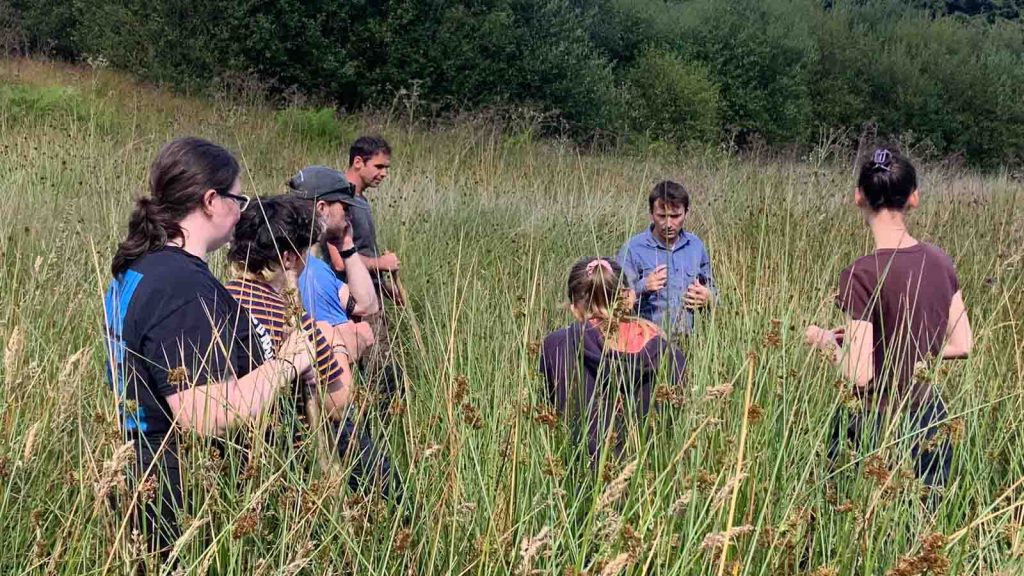Water voles usually avoided the harsh conditions of higher altitudes, but peat bogs and moorlands are now a vital sanctuary for them.

Welsh water voles are being pushed out of their natural habitat in low-lying areas by a non-native predator, a wildlife organisation has warned.
The Initiative for Nature Conservation Cymru (INCC) said that Water voles usually avoid the harsh conditions of upland habitats like peat bogs and moorlands, but these areas are now a vital sanctuary for them.
“American minks have the ability to wipe out whole populations of voles in just a few short weeks,” said Rob Parry, INCC’s chief executive officer, who is researching the impact of non-native species on Water voles’ habitat. “However, as Minks do not frequent the uplands as much as the lowlands, those Water Vole populations in the uplands are a little safer from predation.”
Water vole is a critically endangered, semi-aquatic rodent often referred to as a water rat due to its resemblance to a brown rat. In Wales, they are mainly found in Anglesey, some parts of North Wales, and along the coastal marshes of Carmarthenshire. However, these regions are now populated by American minks.

“We are losing these lowland areas quickly. The uplands of Ceredigion have always been a stronghold [of water voles] and now we think that the Glamorgan uplands are also a stronghold,” he said.
American minks came to the UK during the fur trade but escaped the fur farms in the 1950s and 1960s. In the 1980s, when these damaging farms in the UK ended, minks were purposefully released into the wild. They are known for their predatory habits.
According to the Wildlife Trusts, Mink are very territorial and typically build their dens near water. Female mink usually give birth to one litter of four to six kittens each year. Unlike the reclusive otter, mink are far more commonly observed in their natural habitat.
The INCC said that non-native conifer tree regeneration is also making voles’ situation precarious by damaging grasslands, peatlands, and heathlands, all of which are favourable habitats for water voles.
These conifers are grown and harvested for products like wood chips and fence posts. As the plantations mature, the trees release seeds that spread to nearby open areas (conifer regeneration).
Experts are worried that conifer regeneration, forestry operations, wind energy projects, and the warming climate will make even upland areas suitable for American Mink breeding, posing further threats to the voles.
Voles are not the only animals with a declining population in Wales. In a report released in January, the Welsh Parliament’s cross-party environment committee revealed that one in six species is currently at risk of vanishing from the country. The report said that Wales has seen an average 20% decrease in its wildlife over the last 30 years.

It blamed the lack of resources and cutbacks to the environment watchdog Natural Resources Wales (NRW) for the condition of wildlife and added that key policy documents meant to guide the government on saving nature were years out of date.
The INCC has undertaken a three-year project to identify the different colonies of water voles and to find all the suitable and potential habitats to give a better idea of the population’s strength.
The INCC are collaborating with The Wildlife Trust of South and West Wales (WTSWW), South East Wales Rivers Trust (SEWRT), Natural Resources Wales (NRW), and Vale of Glamorgan Council to make this project successful.
Rhodri Irranca-Davies, Nature Recovery Manager at The Wildlife Trust of South and West Wales (WTSWW), said: “After two years of work, it is wonderful to finally see these Water voles in their natural habitat. This release marks a significant step in the recovery of Water voles in the Vale of Glamorgan and wider work to boost biodiversity in Wales.”
DNA analysis work will inform us on whether these individual colonies are related to each other or whether they are isolated. This in turn will help us work out how Water voles are using and dispersing through the uplands and therefore, what threats they might face,” the organisation said.
Other conservation efforts have also been taken to save the vole population. In 2008, they were given full legal protection in England and Wales. After their extinction in the early 2000s, the Gwent Wildlife Trust (GWT) has been working on a re-introduction scheme to create a new water vole population, which would eventually spread throughout the UK.

Working with the Environment Agency Wales and the Royal Society for Protection of Birds, the GWT released more than 200 specially bred water voles at its Magor Marsh nature reserve in 2012-2013. Since then, they have travelled west along the levels, reaching as far as Newport, despite reporting a 30% decline in this area between 2006 and 2015.
Parry stressed despite these measures, there is a need to challenge environmental decision-makers to do more for wildlife and nature conservation in Wales.
“Reporting invasive species in the first and best step to take. These can be reported to your local authority or directly to NRW. You can also speak to your Member of the Senendd about wildlife and issues like non-native invasive species to ask them to do something about it.”
